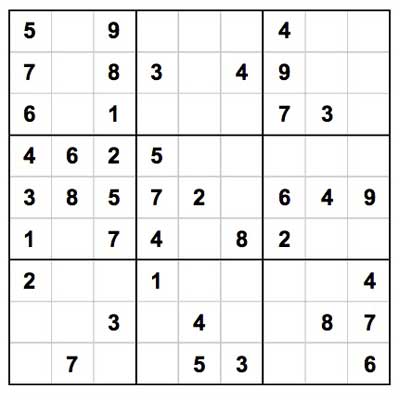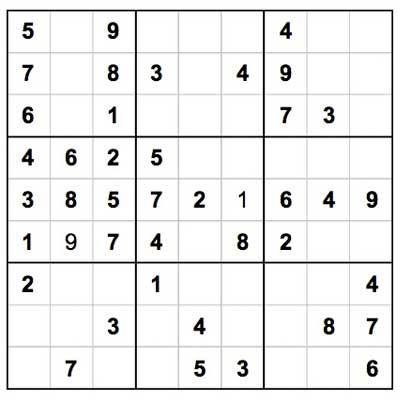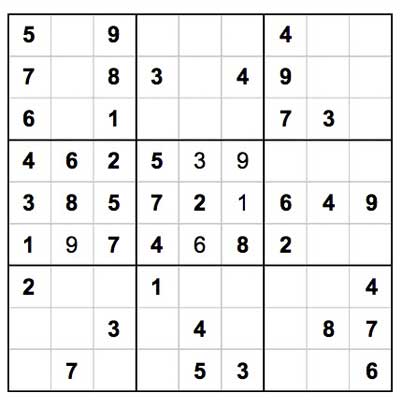How to Solve Sudoku Puzzles – Real Tips and Advice (Part 1)

Here is a real “Beginner” level Sudoku grid from Sudoku.com that illustrates several key strategies for solving Sudoku puzzles. We’ll walk through the process of solving this puzzle to outline some of the key moves and thought processes that can be used to help solve it.

Look for “Low Hanging Fruit.”
Sudoku puzzles can be solved by a logical process of elimination – placing numbers in the appropriate squares on the grid, based on which numbers are already in place. In this puzzle, there is one square (middle row, left column) that, right from the start, has 8 out of 9 numbers already placed, with only one empty square. Just by simply counting the numbers in the square, we can see that the only number missing is number 9.
So we can go ahead and place the 9 in that square. Now, before we move on, let’s look for more “low hanging fruit” – oh look! There is a row (horizontally running through the middle row of squares) that has 8 out of 9 numbers already placed! The only number missing is 1 – so we can place that number as well.
Now the Sudoku grid looks like this:

Look in Neighboring Squares
After placing the 9 in the square in the middle row, left column, we can look to another bit of “low hanging fruit” – the square in the middle row, middle column, which already has all but 3 of the 9 numbers placed (numbers 1, 2, 4, 5, 7 and 8 have been placed).
This means the only numbers still needing to be placed in this square are 3, 6, and 9.
From the neighboring squares to the left and below, we know how to solve this middle square. We know that we need to place 3, 6 and 9. By looking to the neighboring squares, we can see a 6 (left, middle square, top row) and a 3 (bottom, middle square, right row). This means that the top right corner of the middle square is where we can place a 9 – by process of elimination, we know that 3 and 6 cannot be placed in that square, so 9 is the only remaining possibility.
Then, again by process of elimination, we know where to put the 3 and the 6 within the middle square of the grid. Because the square to the left already has a 6 in the top row, that means that the top row of the middle square cannot also contain a 6 – so the top row of the middle square is where we can place a 3. Then we can place a 3 in the bottom row of the middle square. Suddenly, just by looking for “low hanging fruit,” two squares of the middle row of the grid are full.

Sudoku puzzles can be complex, but one of the first lessons that Sudoku beginners need to understand is that the game often offers some easy clues. If you start by taking the “low-hanging fruit” – the easiest parts of the puzzle that the grid already gives you – you can build from that to complete the more difficult areas.